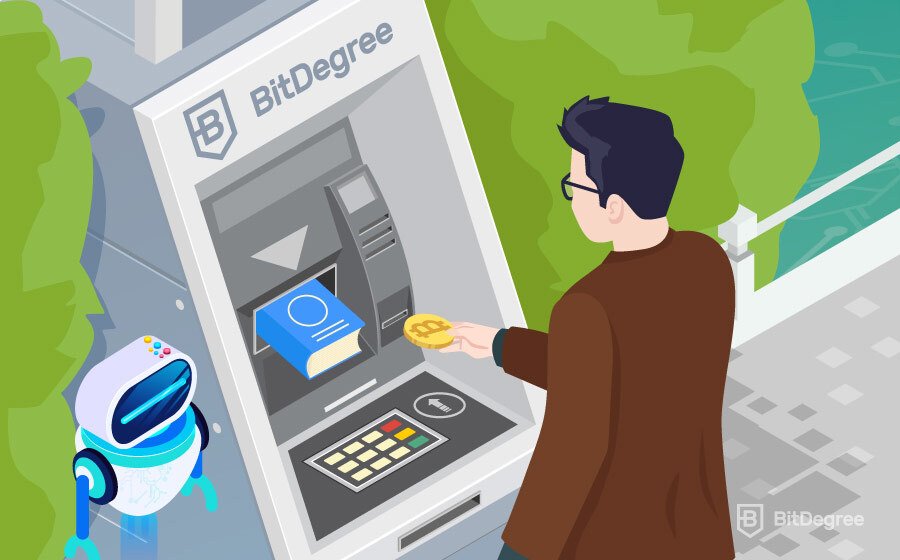The good news is, online course marketing does not require you to have extensive knowledge of different types of advertising: your target audience is people who spend a lot of time online. This means there is little need to learn about ways to promote your courses offline. Most importantly, you need to understand social media marketing and the opportunities your own personal blog or website provides.
Social media: picking your channels
Gone are the days when Facebook was the king. Sure, it’s still prevalent – but the number of social networks has grown exponentially, and the best way to sell online courses is to think strategically. First, get to know the differences between the different websites:
- Facebook and Twitter are still the giants that can be used universally. Both of these networks have hundreds of millions of daily users worldwide (read: incredible exposure), so make sure to use them both for online course marketing, no matter the subject you’re teaching.
- YouTube is also extremely popular and highly diverse, so it’s worth exploring for all kinds of topics. Best of all, if you’re creating video courses, it’s a great place to start sharing your content and getting early feedback.
- Instagram and Pinterest are both highly visual networks, used by millions for lifestyle inspiration. This makes them a perfect choice for promoting courses related to personal development and graphic skills (e.g., web design or image editing).
- LinkedIn is a business-oriented social networking website for professionals. While it might not be the best place to advertise beginner-level courses, it can work wonders for ones that help improve business and workplace skills.
When you get to know the differences between different social networking sites, rethink your target audience. There’s a thing marketers call personas – basically, it’s a detailed profile of your ideal customer. Try to think about what your potential students are like: how old they are, where they live, what’s their economic and educational background, what devices they mostly use for browsing, what challenges they face, and what goals they try to achieve. Upon clarifying the profile of your target learner, you won’t have to hesitate on how to sell an online course to them, as you will understand their habits much more clearly.
Some will swear the best way to sell online courses is advertising everywhere. In some cases, they might be right: the more online marketing channels you use, the more exposure you get. However, it’s also vital to ensure you get the right exposure, and not waste your valuable time working on irrelevant content. Using multiple channels is great, but you have to make sure each of them actually helps you reach your online course marketing goals. For example, if you’re teaching the basics of writing a CV, your student persona is someone who’s just getting ready to enter the job market – in this case, there’s absolutely no use of promoting your course on LinkedIn.
When you decide which social media channels you’ll be using, it’s time to find out how to sell an online course using the unique features they offer.
As of spring of 2020, Facebook has over 2.5 billion monthly users. Think about it for a moment: it’s roughly one-third of all the people living on our green planet Earth. Aside from a few countries with particularly harsh political regimes, Facebook is used by people of all ages and all languages, all over the world. How to market online courses in such a vast arena?
Let’s start from the beginning: create a Facebook page for your courses. It’s not the best idea to use your personal account for this – we don’t want to mix personal with professional, right? Pages are there for businesses, brands, organizations and such to keep in touch with their existing and potential customers. It’s an excellent place for both reputation building and promo campaigns.
The important thing is, don’t use your page for advertising only: make it informative and actually valuable to your students so they find following your page worth their while. Share helpful tips and news, various useful resources and tools, provide handy cheat sheets and other pieces of content. Don’t be afraid to add external links (except those of your competitors, of course!) – for example, if you teach about coding in Python, students will highly appreciate it if you introduce and review various libraries and best practices. When followers find you competent and reliable, they are much more likely to purchase your courses as well!
If you’re willing to pay a little, you should consider trying Facebook Ads. Not only is the network itself extremely popular and allows you to reach a vast audience, but the tool itself is also very well-designed and easy to use:
- When planning how to sell an online course using paid advertising, it’s vital to reach the right audience – otherwise, you will spend a lot and reach a ton of people who don’t have the slightest interest in the subject you’re teaching. Facebook provides better targeting capabilities than any other social network: you can choose to display your ads to users of a certain age, gender, location, language, interests, and so on. This ensures smaller expenses and better conversions.
- Facebook Ads also offer great analytics and reports, so you can really understand the performance of your campaigns and see what works best. You will get insights about your post engagements, weekly reach, and other essential metrics.
- A lot of beginners forget about retargeting. In its essence, it’s redisplaying your ads to those who have already seen in. This is actually a great tactic, and Facebook makes it very easy to implement. People spend a ton of time on the platform, and it would be silly not to use that to get their attention.
According to Oberlo, Twitter has around 330 million monthly active users, and almost half of them return to the platform every day. The unique quality of this social network is the fact that it only allows short posts: even though the initial number of characters was doubled a few years ago and is now 280 characters, the average length of a tweet is just over 30 characters.
Because of this, you need to think smart – people don’t come to Twitter to read long texts. Use tweets to share interesting facts, tips, tricks, and advice related to your field. Don’t forget to use your promo links when mentioning your course, too! You should also include it in your bio, where you have a little more space to create a catchy description and get the followers hooked. However, make sure you don’t over-promote your course: if you only use your account for that, don’t be surprised you barely attract any followers. More than half of the users admit over-promotion is the most annoying thing a business can do on Twitter (the list also includes using jargon, having no personality, not replying to direct messages, etc.), so don’t damage your reputation!
Most importantly, learn to use hashtags the right way. These days, they are everywhere – but did you know they were actually created on Twitter? They are particularly vital for business, too, as they help categorize tweets, ensure maximum findability and improve exposure. A hashtag is a relevant keyword (it can be a phrase, too – but skip the spaces!) with a hashtag symbol (#) at the front. It is highlighted in blue, and you can see all the other tweets that contain the same hashtag once you click or tap on it. Think of it as a Twitter-specific SEO tool!
Do you want to hear another simple option on how to sell an online course to thousands? Give one or more away for free! Another great way to reach a wider audience is creating a good old Twitter contest. It’s not really a secret that offering free stuff always works, right? However, it might be a small price to pay for getting an impressive amount of retweets and new followers.
YouTube
YouTube has around 2 billion monthly users worldwide. If you think it’s lower than Facebook’s, remember that YouTube is much more specialized – it’s all video content-based, which makes the numbers way more impressive. The good news for you here is that the users who are actively looking for video content are a great target audience for video lectures. So, how to sell an online course on YouTube?
Just like on Facebook, you’ll start by creating a profile. You will need a Google account for that: we’d advise you to create a separate one just for this purpose, instead of using your personal account. Remember, it’s always smarter to keep the personal away from the professional – moreover, it will simplify managing your channel.
When looking at how to market online courses, you’ll notice millions of people search YouTube for freely available lessons, tutorials, and guides. Use that: provide a taste of your content to get them interested and introduce yourself as an expert. This can be very useful for both you and the viewer: they will get some advice and find a course that can help them reach their goals, and you will get early reviews. Don’t forget to include your promo link in the description! In addition to that, follow these online course marketing tips to reach your objectives:
- People are highly responsive to visuals, and it’s especially true on a platform like YouTube. Make sure you put enough time and effort into creating attractive video thumbnails: people see them much quicker than they read the caption, so try to make them engaging and content-related.
- Publish regularly. It’s not enough to get your users interested once – you have to work on keeping them! Posting once a week would be somewhat optimal. Offering informative content will help you build a strong reputation, plus, the more you work on making videos, the better your skills get – you’ll be able to use them when you create new courses!
- Become a part of the wide YouTube community: find partners, invite them to your videos, and appear in theirs. By choosing channels of the same category as yours for partnerships, you will reach a lot of potential students who already have a clear interest in the topic.
- Optimize your videos for search engines. Use relevant keywords to improve their findability: include the best one in the title of your video and a few secondary ones in the description.
Instagram is a bit more specific in terms of content than the networks discussed above. It is highly visual: while you can (and often should) include long captions when you’re adding an image or a video, that’s still exactly what that will be – a caption. The most important part is the visual – keep that in mind as you plan your online course marketing strategy!
How to sell an online course on Instagram? First, make sure it’s the right tool for you: consider the age of your target audience: according to Statista, the majority of more than 1 billion monthly Instagram users are people under 35, and it’s the second most popular platform among teens. This makes it the perfect place to advertise beginner-level courses, which would find no place at LinkedIn. However, you should either be able to create visual content yourself, or have someone with the right skills help you. Low-quality images and a messy feed will only hurt your reputation, and free stock photos will not get you far either.
Start with creating a business profile: it’s a free option that allows you to see a bit more data on user engagement. Choose a clear username, use a quality portrait of yourself (or a logo, if you have one) as your profile picture, and write a short catchy bio. Use this space to hype the user up so they scroll through your feed and see what you’re all about! Naturally, it’s also a great place to include your instructor’s promo code.
Now, it’s time to understand the posting options you have:
- You can add images and videos to your feed. One post can have more than one, too. They will be available for the user to view, save, and send to others anytime.
- The story functionality allows you to add an image or a short video (up to 20 seconds) that’s only available for 24 hours and can be viewed by clicking on your profile picture. A pink circle around it indicates the profile owner has uploaded a story that can be viewed now. If you want to make your story last longer, you can add it to your profile’s highlights that are displayed right above your feed.
- For a longer video, use the newest IGTV function: you will be able to upload a 15-minute video straight from your phone and add a cover picture, just like on YouTube.
Now that you’ve got your basics down, here are a few recommendations on how to market an online course on Instagram and reach your audience:
- Just like on Twitter, you will be using hashtags to improve findability. However, with a social network of this size, you need to pay even more attention to choosing them right. To ensure your post doesn’t get lost among thousands of others, use more specific hashtags that return a smaller number of results – e.g., #pythonbasics is way better than #coding, and #unityvoxelart is a lot more precise than #games.
- Don’t be afraid to make it a bit more personal: statistics show that pictures that involve faces get a lot more likes. Don’t hide behind your courses – you are the expert and the professional of the subject, so let them see your smile!
- Create bonds with your students – encourage them to tag you in their photos, review your courses, and mention them in their posts. Not only this is a smart option on how to market an online course via user-generated content, but you’ll also seem more reliable and student-oriented as you share their input and provide shout-outs.
- If you’re willing to invest a little, you can reach out to Instagram influencers or use sponsored ads to promote a particular story or post. Both of these options can help you reach highly specific audiences, so do your homework before making the final decision.
Another highly visual network is Pinterest. However, it’s not really your best choice due to the differences between its user base and your target audience. The most popular topics there are beauty and fashion, wellness and food, travel and DIY – not digital or workplace skills. While online course marketing on Pinterest is possible, it’s hard – especially for a beginner.
Unlike Instagram, LinkedIn is not the most popular option for youths: less than one fourth of its 675 million monthly users are millennials. Therefore, it’s not the best way to sell online courses aimed at those who are just getting ready to enter the job market – e.g., how to write a good resume (especially when a LinkedIn account is often used instead of one). It is one of the most popular networks for B2B marketing – anyhow, that’s not much of an advantage for someone interested in how to sell an online course to potential students.
If you create workplace courses (e.g., productivity or time management) or something for the advanced learners, using a network of business professionals might be a smart choice. According to LinkedIn itself, creativity, persuasion, and collaboration are currently the most needed soft skills, and blockchain is the most sought-after hard skill, followed by cloud computing and analytical reasoning.
However, think carefully whether it’s the right tool for you, because using LinkedIn for online course marketing can take up a lot of your time. Frivolous and barely-useful content will not pass here: people come to LinkedIn for professional, high-quality content, so writing public posts will require some effort. Long reads get the most shares, and comprehensive how-to articles attract the most engagement. Another time-consuming, yet highly-effective option is joining specific groups on the network and sharing your expertise there.
Don’t forget to include your promo code at the end of your posts – remember, out of all the options for how to sell your course, using the promo code guarantees the highest earnings for the instructor. Other great places to put it on LinkedIn is your bio and your signature when posting in groups – both offer decent exposure without the impression of trying too hard and over-promoting.
In the past, LinkedIn also offered a great option to export the list of your connections and their contact info – this way, you would get a solid email list to use. When planning how to sell an online course, you know that tailored email marketing is one of the highest-converting marketing channels. While this option is still available, it is not as useful for online course marketing as it used to be: you can only export first-degree connections, and the recently updated privacy settings have allowed users to choose not to disclose their email addresses in data downloads. Because of this, you can still get the list, but a lot of contact information might be missing from it.
Using a personal blog or website
A blog or a website is a great advertising tool for any online instructor. Why? Mainly because you can use it for everything you would use social media for (text, images, videos, you name it), but without the restrictions they impose. A well-made website will help you build a strong reputation, tell your story, share useful content with your users, prove your expertise and promote your courses all in one place. If you don’t have one, but would like to, try Wordpress, Wix, Squarespace, Weebly, or other simple blog-building systems.
When thinking about how to sell an online course using your own website, you can use most of the advice we gave about promoting on social media. Identify your target audience, create quality content that’s actually useful to them, and publish it on a regular basis. Optimize your content for search engines by using relevant, but too widely used keywords, and diversify your posts by using images and videos. Share positive reviews for your courses, and when you actually mention them, always use the promo links to refer potential students directly to their landing pages.
Most importantly, create an email opt-in. In essence, it’s a way for the user to submit their email address to the website’s owner (you). You can offer them a chance to get a small discount, a newsletter, some downloadable resources – you name in. The essential thing is, you will build a mailing list that you can use for your online course marketing needs. Don’t spam people: the fact that these people visited your website and entered their email addresses shows they are interested in what you have to teach them, so it’s important not to scare them away! Think about how to provide them with actual value – not just how to sell an online course.
How to market online courses offline
When you’re figuring out how to make your online courses sell better, it’s easy to forget the opportunities the offline world offers. In the very beginning of this text, we said the best place to promote online courses is online: television, print, and outside ads are both pricey and targeted at way too broad of an audience. However, there are some options you shouldn’t miss:
- Get yourself some business cards and don’t be afraid to hand them out. They aren’t very expensive, and they can help people you meet remember you better. Just don’t forget to include your promo code on the card! You can also leave them in local cafes, galleries, pin them on community boards – but make sure to ask if that’s allowed first.
- Participate in networking meetups where entrepreneurs, professionals, and other interested people come together to establish contact, share their stories and introduce themselves to the community. It’s an excellent opportunity to demonstrate your expertise as an online teacher and find potential students.
- Depending on the subject you’re teaching, it might be smart to give a guest lecture at a local school, college, or university. This might not be the best option if your courses are very specific (e.g., if you’re explaining some highly-specialized software), but for it can be a great opportunity to teach personal development and workplace skills.
As you can see, there’s a bazillion ways to ensure you’ll sell online courses quicker and to more people. The important thing is to choose the most suitable options for your particular case and make the most of it!










